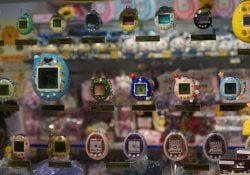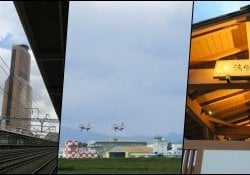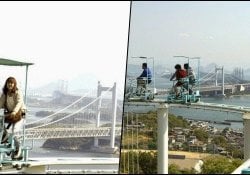Ever wondered what shoes the Japanese wear? ever heard of geta, zori, uwabaki, surippa, setta, okobo, waraji and others? In this article, we are going to know 10 sandals, shoes, flip flops and other traditional shoes from Japan.
Traditional Japanese shoes are important in the history of Japan and the world. Many of the flip flops we use today had Japanese origins, so much so that in Maranhão the Havaianas are called Japanese. Ready for this adventure?
Zori - The Japanese Havaianas
At zouri [草履] are flat Japanese sandals with straps that can be made of rice straw, leather, lacquered wood, cloth, rubber or synthetic material. At zori They are basically Japanese flip-flops with Y-shaped handles similar to Hawaiian ones.
Traditional zori are usually worn with a kimono along with a sock called a tabi. They are open to prevent foot sweating due to Japan's humid climate. Most of them are made of rice straw, but some are made of wood.
It is believed that these slippers were created with influence from China and Egypt and their origins date back to the Heian Period (794-1192). Havaianas were blatantly inspired by zori, we recommend reading our articles on zori and its resemblance to Hawaiian.
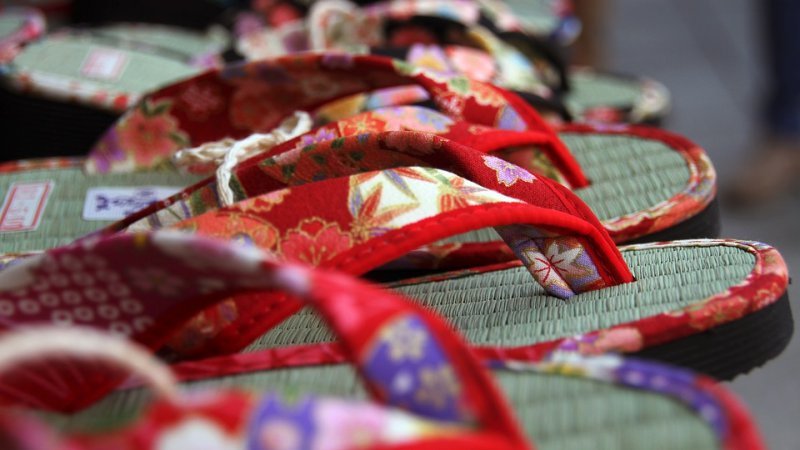
Geta - The traditional wooden shoes
Geta [下駄] is a traditional Japanese sandal, with a wooden base, similar to a clog, it serves to prevent the foot from coming into contact with the ground. They are worn with traditional Japanese clothing, such as kimono or yukata, or during the summer.
You geta are the oldest shoes in Japan, widely used in swamps and rice paddies to avoid soiling clothes and feet, the teeth are suitable for mountainous and hard terrain. Geta makes a noise when you walk that the Japanese call karankoron.
Currently the geta is mainly used by geisha, some modern shoes try to imitate the geta, but the traditional one is made of wood with one or two teeth. If you want to know more, we recommend reading our article about geta, the Japanese wooden shoe.
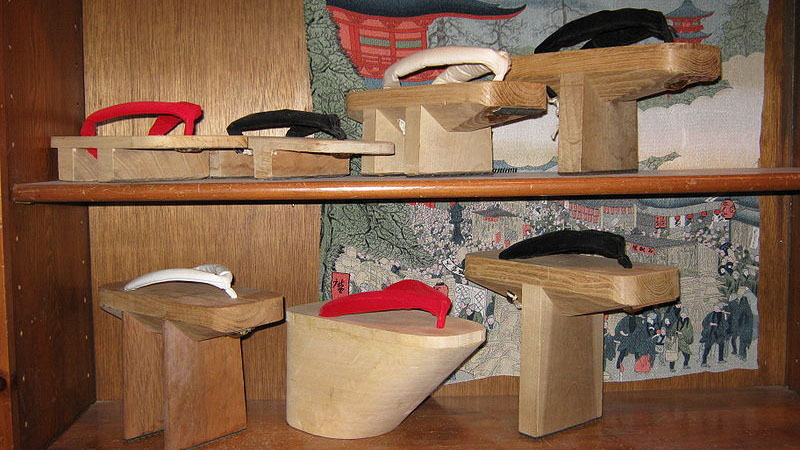
Surippa - Japanese slip slippers
Surippa [スリッパ] comes from English slip and literally means to slip. It gets its name from its ease of being put on just by sliding your feet inside it. It is very similar to the shoes but they are open at the bottom and sometimes at the front.
They also don't have clasps or knots to fasten, with different sizes and models for indoor and outdoor use. Due to their ease of wearing, they are widely placed inside houses in the genkan to be used by visitors.
At surippa were initially created in the Meiji era to be worn over shoes to facilitate the entry of foreigners who are not used to taking off their shoes to enter homes. Soon this idea became a widely used footwear.
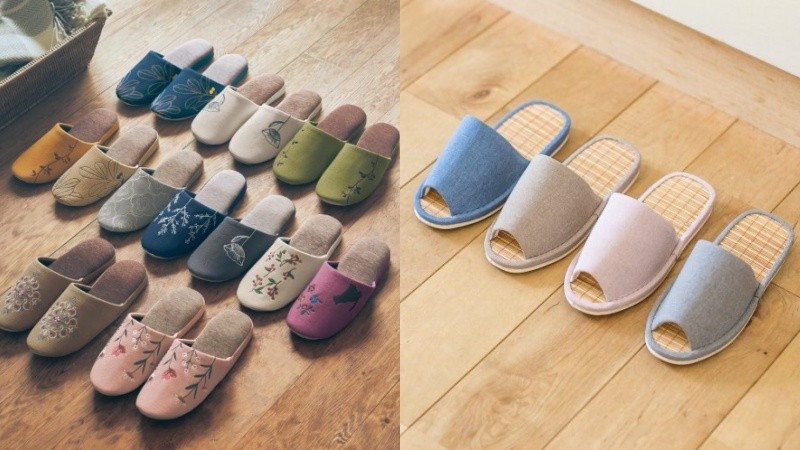
The article is still halfway through, but we recommend also reading:
Uwabaki - Traditional slippers for indoor use
Uwabaki [上履き] are hallway or indoor slippers widely used in public places such as schools, gyms, offices, theaters and other public offices. They are also called upper shoes or Uwagutsu [上靴].
different from surippa It has some straps to attach to the feet, it is open only at the top, somewhat resembling a moccasin. They are usually seen more in schools, especially in primary schools where students even write their names on it.
They are usually made of rubber and cover the toes and heels. These shoes are not always tied together, some are just fitting, as schools encourage students to go barefoot in some situations.
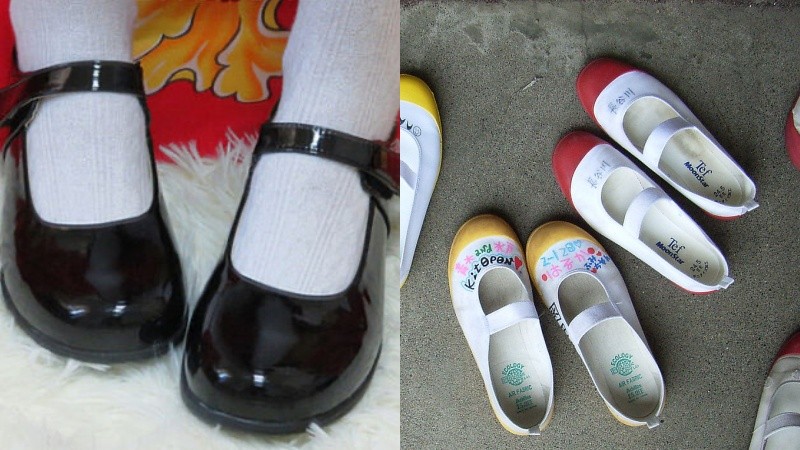
Setta - Sandal with leather sole
Setta [雪駄] are Japanese sandals with a leather sole intended to provide a waterproof function, have an iron tail at the bottom, are durable, moisture resistant and damage resistant. The upper is woven with bamboo, leather or synthetic material.
Some claim to be a kind of geta, but looks more like zori popular among men. The name arrow literally means snow shoes. the technique jikazuge fixes the leather bottom directly to the top.
In the past, footwear was called Sekida and was created for tea master Sen no Rikyu to be used in his teahouse garden on snowy days. The name was changed from sekida to “setta” when migrated to eastern Japan.
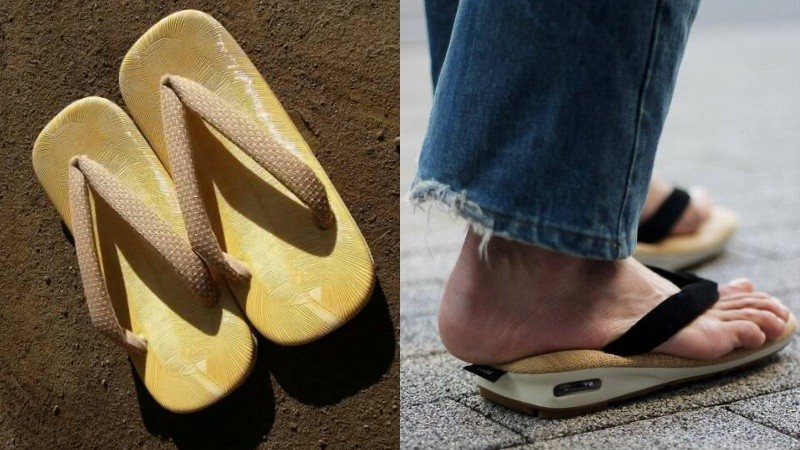
Okobo - Japanese High Heeled Clog
Okobo [おこぼ] are thick wooden clogs, a type of high heel worn by apprentice geisha (maiko). Its name changes from region to region and may also be known as pokkuri, koppori, pokkuriko and bokkurigeta. That's because some have a hole in their sole with a bell to make noise.
As well as the geta, its practical objective is not to soil the kimono. This type of footwear was once a fashion reference, it was used to lacquer the wood in order to make drawings and arts. In some cases it is used together with the sock called tabi.
Children often wear this type of footwear, especially during the festival. shichigosan. It has a large base cut from a single piece of wood, usually made from paulownia. The height of an okobo can reach up to 15 centimeters.
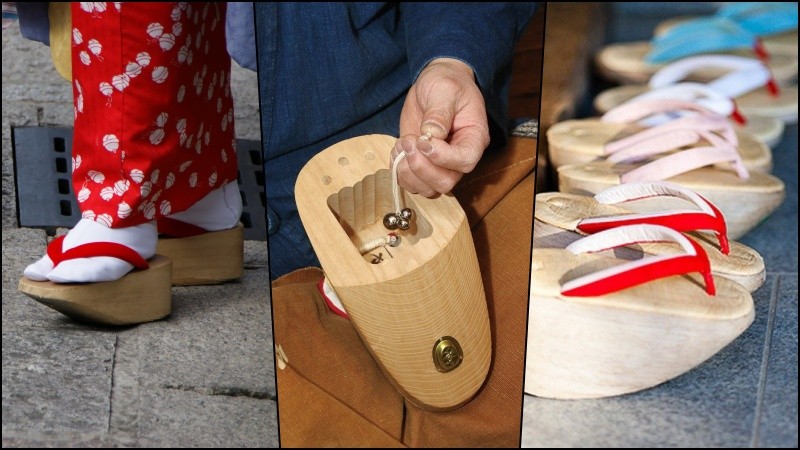
Waraji – the poor man's slipper
Waraji [草鞋] is a traditional Japanese footwear used in the past by common people and was made using straw ropes. The toes traditionally protrude slightly out over the edge of the waraji.
You waraji are made with rice or hemp straw, cotton and palm. Ropes made of the same material wrap around the ankles and secure the sole to the foot. Today waraji are still used at festivals and by Buddhist monks.
It should not be used on hard or paved ground, this will wear out and decrease its durability. This shoe was useful in the past when paved roads did not exist, walking on the ground allowed the soil to enter the crevices in the straw, thus reducing frictional wear.
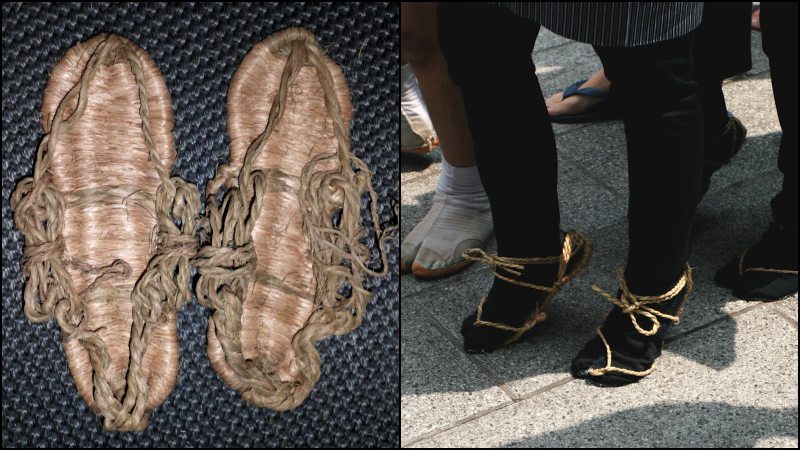
Other Traditional Japanese Shoes
Kigutsu - Wooden Boots
Kigutsu [木靴] are wooden boots, all or the main part, like the bottom, is made of wood. Can be used to refer to other wooden shoes like asagutsu, geta and other wooden shoes of foreign origin.
Shigai - Silk Shoes
Shigai [絲鞋] are silk thread shoes worn by underage royal families, children's dance costumes, and young shrine maidens who participate in Shinto ceremonies.
Jika-tabi - Socks turning into shoes
Jika-tabi was invented and popularized during the 1900's. These shoes are practically tabi socks with a stronger sole, they are usually worn by Japanese people who work outdoors like the jinrikisha.
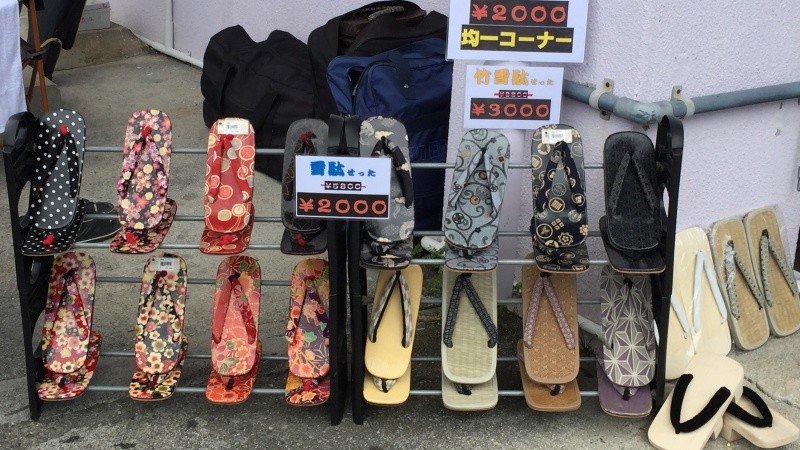
Different categories of traditional Japanese shoes
As promised, we show you 10 traditional shoes from Japan, but there are many others that were invented in Japan in the modern era or variations of the traditional geta and zori. Below I will try to add some more variations of these shoes:
We recommend reading our guide that talks about the Japanese shoes, sizes and vocabulary. I hope you enjoyed our article, if you did, don't forget to share and leave your comments.
- Taka-ashida geta – Wooden sandals made to be used in rain and bad weather;
- Hiyori geta / Masa geta – Traditional wooden sandals with two teeth worn during good weather;
- Ashida [足駄] - High clogs; rain clogs;
- Yamageta [山下駄] – Geta of the mountains, raw geta, usually made of Japanese cedar;
- Hachitsuwari [八ツ割] - Clog without teeth;
- Kōshi [厚歯] - Clogs with thick teeth in the anterior-posterior direction;
- Sandaru [サンダル] – Term of western origin to refer to some sandals from Japan;


